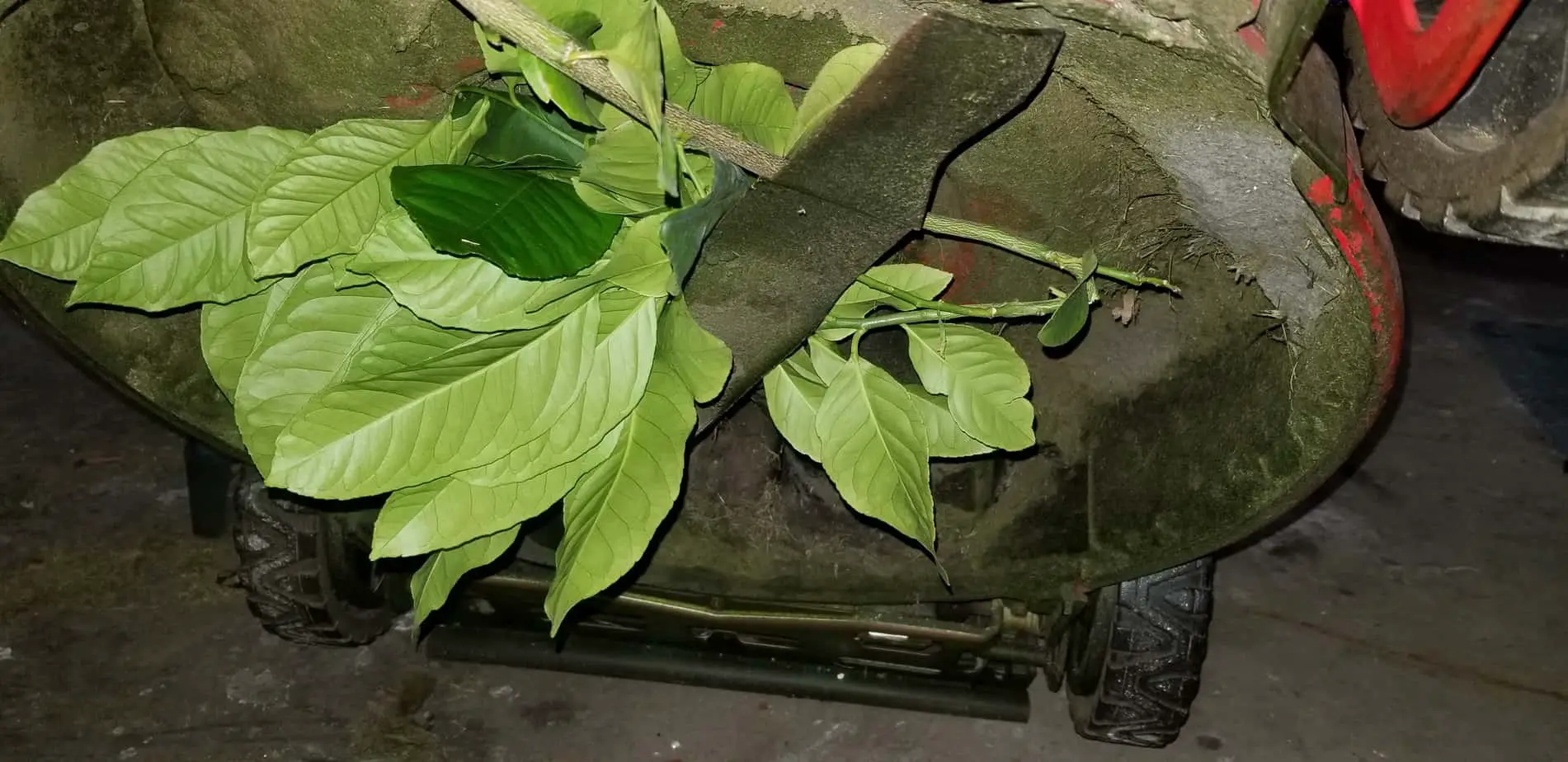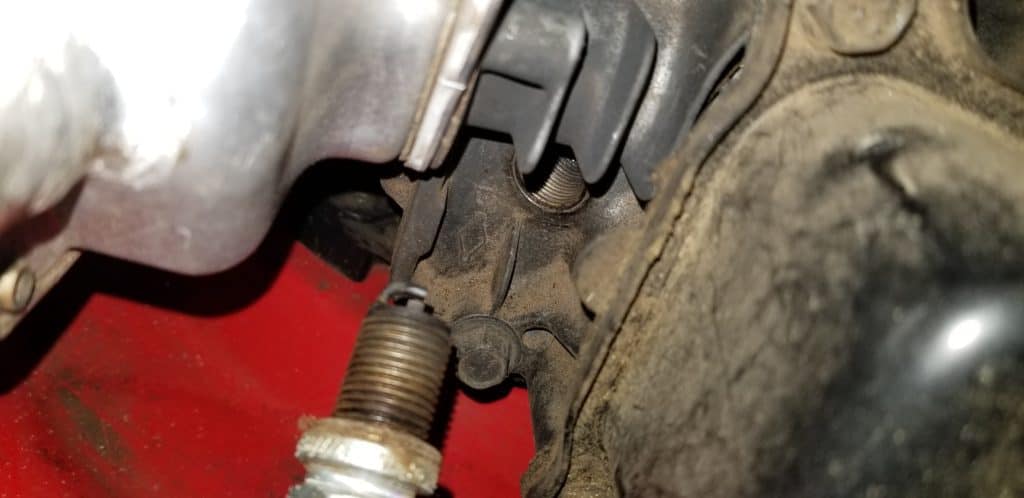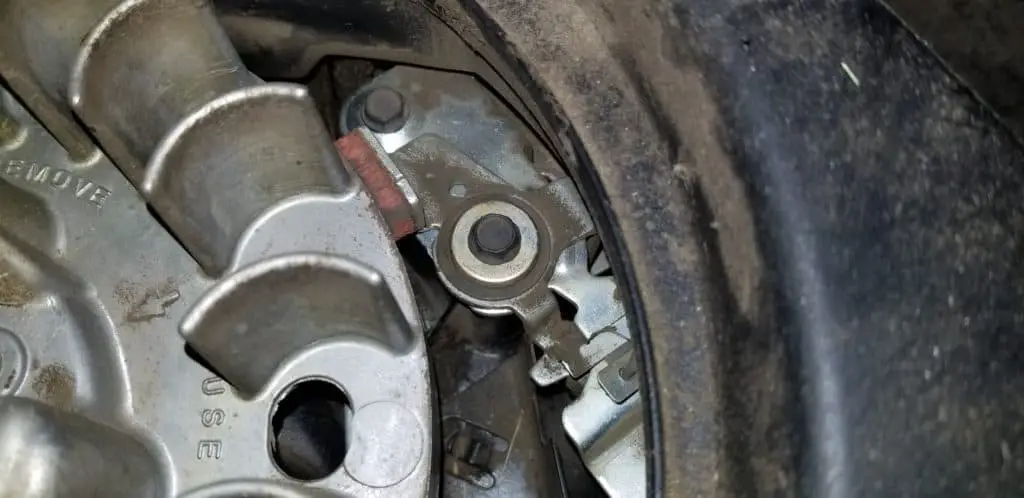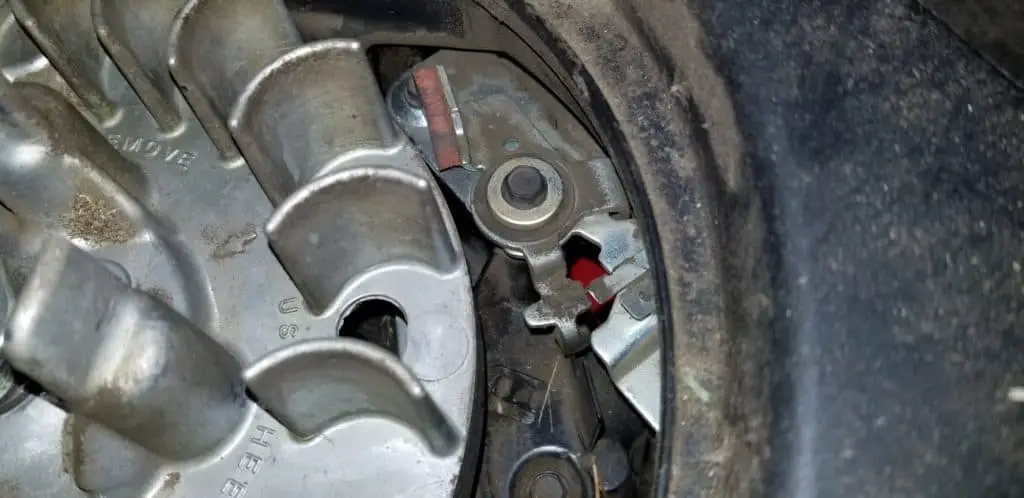Everyone who has owned a push mower has experienced the dreaded moment when you go to pull the recoil starter cord and you nearly throw out your shoulder or break your fingers from the tension. It’s not fun.
Sometimes the cord is completely locked up, and sometimes it will jerk towards you violently but slowly as you try not to get a hernia from your efforts.
The good news is that there is a very small chance that anything is actually broken or that you even need to replace something.
This article will take you over a few very common fixes that will take care of 95% of your problems before you need to take it to a small engine repair shop. I’m throwing 7 years of fixing small engines as a side job into this article, so hopefully that knowledge will pay off.
It is common for a lawn mower’s pull cord to not work due to hydrolock, which is where liquid oil or gas has entered the cylinder and cannot be compressed by the piston as the cord is pulled by hand. This is typically caused by tipping the lawn mower incorrectly. Removing the spark plug and pulling the starter cord repeatedly will flush out the cylinder.
While hydrolock is the most common cause, and can happen for a number of reasons, there are still a few other things you should check in case that doesn’t fix the problem.
I’ve got a quick table for you below, followed by a video where I will guide you through the process. Explanations of the problems and their corresponding repairs will make up the rest of the article.
I have the problems listed in the order I would check if I was having a problem with my own lawn mower. It should go without saying, but if this is your first time using a push mower, make sure that you are clamping the brake lever (located right above the handle) to the handle to disengage the flywheel brake before you try starting it. It’s an honest mistake, but one worth mentioning.
Don’t panic about the pull cord, we’ll get this fixed together!
| Reason Lawn Mower Won’t Pull | Fix |
|---|---|
| Blade Obstruction | Remove spark plug boot and tip the mower over properly to remove the obstruction by hand. |
| Engine Seized Up | Add oil to engine if there was none or if it was extremely low. Add a small amount of oil to combustion chamber with the spark plug removed and tilt gently so cylinder walls are coated with oil. Allow to sit. Try pulling the cord with the spark plug removed and see if the piston will move. |
| Hydrolock | Remove spark plug and pull the cord to clear any liquid gas or oil that is sitting on the piston. |
| A Malfunctioning Brake Assembly, Brake Cable, or Brake Lever | Ensure the cable is hooked up to the brake lever and the assembly itself and that there is minimal slack. Replace cable if there is excess slack. |
| A Malfunctioning Pull Cord Assembly | Replace or repair (see video below). |
A Blade Obstruction Will Stop a Lawn Mower’s Pull Cord from Moving
The easiest thing to check, and by far one of the top two reasons for the pull cord not working, is for some sort of blade obstruction.
This will typically be from a stick that has gotten under the deck and it binding up the blade. You could also have rope or cordage that has wrapped around the blade shaft to the point that it’s binding things up. Something I’ve also seen is that the blade can get caught up on the debris skirt that runs on the ground in front of your feet as you push it and attaches to the bottom of the mower deck.
Regardless of what it is, the solution is essentially the same — you must remove the obstruction.
The blades are connected to the shaft that attaches to the middle of them. From there, the shaft runs through the engine, connects to the piston, and up through the top of the engine. From there it attaches to the flywheel, blower fan, and starter cup. The starter cup attaches to the pull cord.
If your blades are seized up, the rest of the chain all the way up to the pull cord will be seized up as well.

How to Fix a Blade Obstruction
You’ll need to access the bottom of the mower deck to check for an obstruction.
There is a right way and a wrong way to tip a lawn mower. One is safe, and the other will lead to problems. I highly recommend checking out this link here (it will open in another tab) to make sure you’re not missing anything.
Remove the rubber spark plug boot first, and then tip your lawn mower back so that the handle is on the ground. Place something heavy on the handle to keep the lawn mower tipped up.
This should give you enough room to at least check and see if you have anything binding up the blades.
Once the spark plug boot is removed, you can safely remove the obstruction by hand if you’ve got enough room to work.
If you need more room to work, you’ll need to tip the mower on its side. Please check out the article above to tip yours the correct way so that you don’t create more problems for yourself.
Also, just as a reminder, make sure to check the debris skirt for being a possible obstruction. It’s easy to overlook.
With the blade clear of anything that might be binding it, try turning the blades by hand. One side of the blade will be dull and the other will be sharp. Spin it in the direction that the blade would be cutting grass if it were spinning.
If the blade now spins freely, it should now work to pull the cord back. If the cord still doesn’t work, or if the blades won’t spin by hand, we will go to the next section.
A Seized Engine Will Stop a Lawn Mower’s Pull Cord
Next, I would quickly check the oil in the crankcase by pulling out the dipstick and seeing what level it’s at.
If your engine is super low or out of oil, it’s possible that the engine is completely seized up or damaged from overheating when you last used it.
Remember from the previous section that the blade shaft runs through the engine where it connects to the piston?
The piston needs to be lubricated by the engine oil to continue to slide up and down in the cylinder. Without oil, or enough oil, the piston will overheat in the cylinder as it will essentially be metal on metal at a very high rate of speed.
Metal can warp or start to fuse together from the heat caused by the excess friction.
Once this is done, your engine is likely toast.
If you have enough oil in on the dipstick, you can proceed to the next step.

If you don’t see oil on the dipstick at all, add oil (or drain the oil that’s in there and start fresh) until the level is correct.
Proceed to the next step where we’ll lubricate the cylinder if needed, and check for hydrolock as well.
Pro Tip: A lawnmower pull cord could also be sluggish to pull if you are trying to start the mower in temperatures below freezing 32°F, or 0°C. SAE30, the most common type used in mowers, becomes too thick at cold temperatures and doesn’t adequately lubricate the internals of the engine to allow for a smooth pull. Running a lawn mower in these temps with this oil can cause engine damage.
Hydrolock Can Cause a Lawn Mower Starter Cord to Fail
Hydrolock is very common and can be caused for several reasons.
Hydrolock is when you have a liquid (either gas or oil) that has made its way into the combustion cylinder and it’s sitting on top of the piston. The piston cannot compress and the excess pressure prevents movement.
Air can be compressed, but liquids cannot. You certainly can’t do it by hand, and even your engine, moving at 1000’s of RPMs cannot do it. That’s why it stalls when it “floods”, or when liquid gasoline gets into the cylinder.
If the piston can’t move due, then the blades can’t spin and the recoil cord won’t pull.
You may get a little movement on the cord if you pull slow and hard, but it will feel extremely choppy and the cord will feel like it’s going to break your fingers as it snaps back to its original position.
A good visual sign that you have hydrolock is oil seeping out of the exhaust as you’re trying to pull the cord.
How to Fix Hydrolock in a Mower
Go ahead and remove the spark plug boot and then the spark plug itself. You’ll typically need a 5/8″ deep well socket, but your size may vary.

With the spark plug removed, depress the brake lever and slowly pull the starter cord. If it pulls, then you had hydrolock.
Go ahead and pull it a few times with the spark plug removed like you are trying to start the mower.
Keep the direction of the spark plug hole pointed in a safe direction since gas or oil will be flinging out of it as you pull on the cord.

You can now put the spark plug back in and connect the rubber boot. The engine should start up but it will likely smoke for 10-15 minutes as it burns off the excess oil that made its way into the exhaust. This is completely normal.
*** Going back to the previous section regarding a seized engine — if your engine was very low on oil and you’ve removed the spark plug but the starter cord still won’t pull, then you can try to lubricate the cylinder a bit. Place a tablespoon or two of fresh engine oil in spark plug hole and gently tilt the lawn mower around a little to allow the oil to touch the cylinder walls.
Let it sit for an hour or so to let the oil try to work its way by the piston rings and lubricate everything. It may be completely beyond repair, but it’s worth a shot.
Be sure to check the following steps as well, in case the problem is upstream of the piston and somewhere with the flywheel or pull cord assembly itself!
The Brake, Brake Lever, or Cable Are Malfunctioning and Stopping a Mower’s Pull Cord
We started at the bottom with the blades, then worked our way up to the engine oil in the crankcase, and then to the piston and cylinder. If we keep working our way up, we find ourselves around the flywheel.
The brake lever that you clamp to the handle has a cable that runs down and connects to an assembly that has a brake pad that pushes against the flywheel. It is also connected to a spring. When at rest, the spring keeps the brake pad pushed against the flywheel.


When you pull on the lever, it lifts the brake pad off the flywheel and allows it to spin when you pull on the cord.
The brake lever near the engine also triggers a “kill switch” for the engine when it’s at rest. If the brake lever by the engine is not full disengaged by you bringing the brake lever by the handle and the handle together, then the kill switch keep the spark plug from working.
There could be a number of things that go wrong here. The cable could be inserted into the wrong hole if someone did some maintenance on it, the cable itself (usually the plastic tubing) could be compromised, there could be rust that’s not allowing the brake lever by the engine to turn, etc.
The cable itself should be relatively taut, with just a slight amount of slack when the brake lever is not being pressed against the handle. If it is excessively droopy, make sure that the one end of the cable attaches to the brake handle, and the other to the brake lever by the engine.

If they are properly connected, then you will need to replace the cable. Search your make and model mower and check for a parts manual online to get a parts number. Cables can easily be found on Amazon.
To check the actual brake pad and the moving parts, you’ll need to remove the cover and shroud from your mower. If your cable looks good, then you’re going to want to proceed to the next step since we’ll be taking things apart anyway.
Starter Rope Assembly is Broken
Finally, we’re at the last step. We’ve worked our way up through the whole mower and are now at the starter rope assembly itself.
The starter rope assembly, or recoil assembly, is basically a giant compressed spring that winds up your cord when you let it go.
Sometimes they can get bound up, tabs can break, or things move out of place.
Removing the starter cord is relatively simple. Just a few screws hold it on. Once it’s removed, the rest is rather complicated to explain in written form.
I have a video that I made for repairing a generator pull cord. The concept is the exact same, so feel free to check out the video below. ⬇⬇⬇
